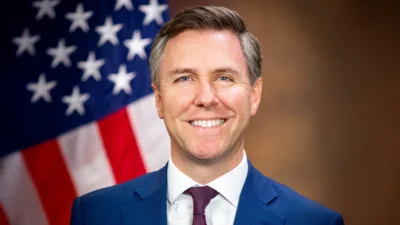Washington, D.C. - Energy and Commerce Chairman Frank Pallone, Jr. (D-NJ) delivered the following opening remarks at a Health Subcommittee legislative hearing on “Building Consumer Confidence by Empowering FDA to Improve Cosmetic Safety:"Today, we will discuss two legislative proposals that empower the Food and Drug Administration (FDA) to more effectively regulate cosmetic and personal care products.
Consumers today assume that the cosmetic products they purchase are safe and appropriately regulated, but unfortunately that isn’t always the case. The truth is that Congress has not updated FDA’s authority to regulate the multi-billion-dollar cosmetic industry in over 80 years. This is especially concerning considering the industry’s exponential growth. Today, the average American woman uses 12 personal care products a day and nearly all Americans use at least one personal care product daily.
Yet, under the current system, FDA does not have the tools or the resources it needs to ensure these products are safe for consumers. For example, FDA does not have the authority to require companies to report adverse events associated with their products. It cannot issue a mandatory recall for products if there are concerns the product could be harmful to consumers. And it cannot ensure foreign suppliers are complying with good manufacturing practices or using ingredients that are safe for cosmetic use. These are all giant gaps in consumer safety that we must address.
One particularly alarming example of the short-comings of the current system involves asbestos-tainted products marketed to kids and teens. Earlier this year, FDA detected asbestos in products manufactured by both Claire’s and Justice Retail - two chains that primarily market their products to kids and teens. After FDA notified Claire’s of its findings, it took nearly a week for the company to agree to take their asbestos-tainted products off the store shelves.
That’s unacceptable, but unless we equip FDA with the tools and resources the agency needs, we’re going to continue to see frightening issues with these products for years to come.
That’s why I’ve introduced comprehensive legislation to update FDA’s authority over cosmetics and to provide the agency with the resources it needs to properly oversee the market and protect consumers.
The Cosmetic Safety Enhancement Act empowers FDA by giving it the authority to issue mandatory product recalls, requires manufacturers to notify the agency about adverse events, compels manufacturers to register their cosmetic ingredients, and provides FDA with stable funding to conduct this new and important work.
While this legislation takes an important step forward, I recognize that we still have more work to do. Over the past few weeks I have worked in good faith with colleagues on both sides of the aisle, FDA, industry and other stakeholders to make changes to the ingredient review and user fee frameworks. I know that our work there is not done, and moving forward I intend to continue to work to get this language right.
I also understand that my colleagues and industry stakeholders still would like to see preemption language added to this legislation. I hope that we can work together to draft language that will protect state laws, preserve the ability of individuals to hold industry accountable when they are of harmed, and, at the same time, provide certainty to industry about the rules and requirements they must comply with.
I thank my colleagues for their commitment to working together to come to a bipartisan agreement and I look forward to continuing that work as we move through the legislative process.
As this industry continues to grow, it is more important than ever that we ensure consumers are safe and have confidence in the products they use every day.





